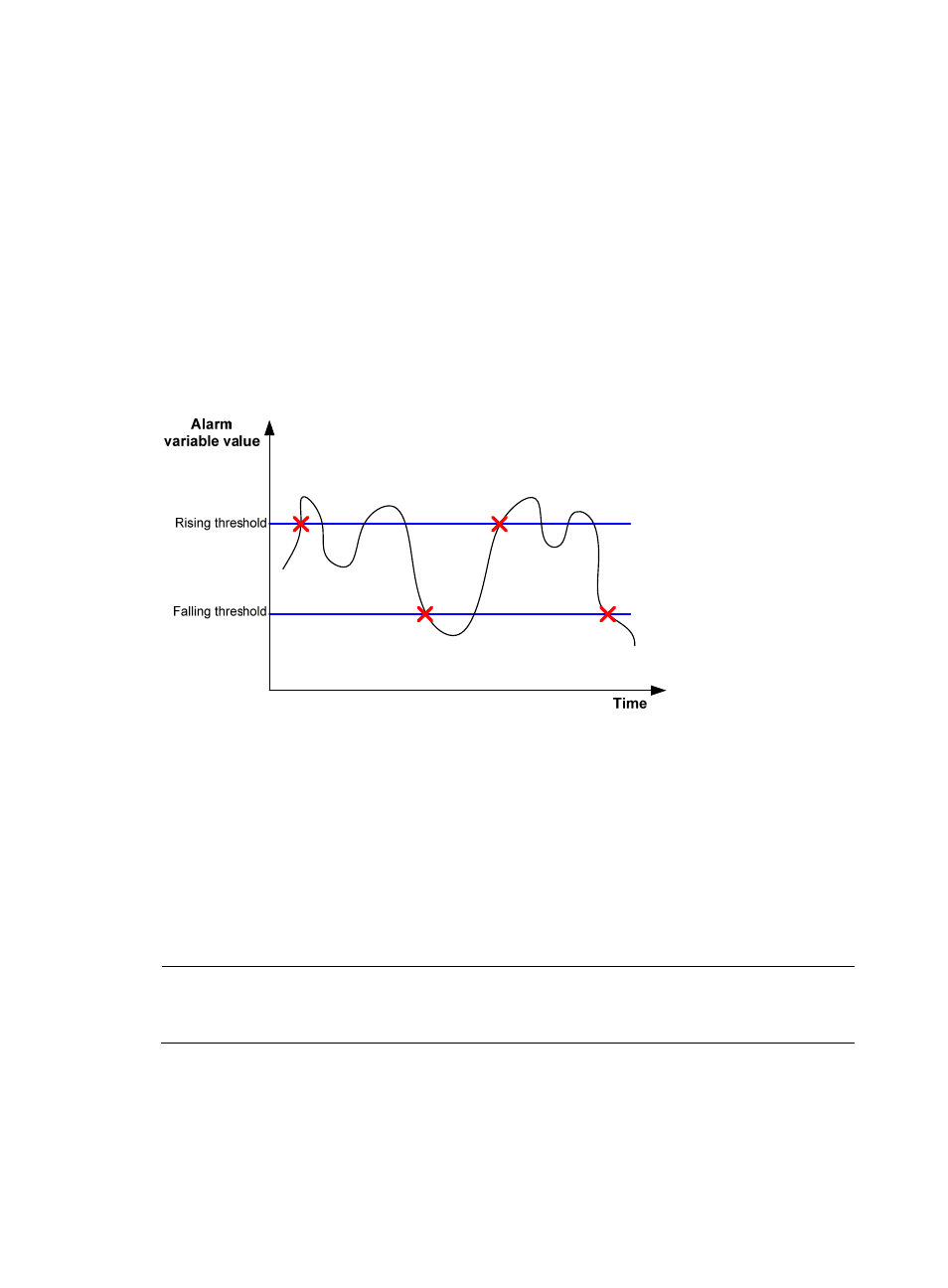Alarm group, Private alarm group – H3C Technologies H3C SecBlade NetStream Cards User Manual
Page 310

295
Alarm group
The RMON alarm group monitors specified alarm variables, such as total number of received packets
(etherStatsPkts) on an interface. After you define an alarm entry, the system gets the value of the
monitored alarm variable at the specified interval, when the value of the monitored variable is greater
than or equal to the rising threshold, a rising event is triggered; when the value of the monitored variable
is smaller than or equal to the falling threshold, a falling event is triggered. The event is then handled as
defined in the event group.
If the value of a sampled alarm variable overpasses the same threshold multiple times, only the first one
can cause an alarm event. In other words, the rising alarm and falling alarm are alternate. As shown
, the value of an alarm variable (the black curve in the figure) overpasses the threshold value
(the blue line in the figure) for multiple times, and multiple crossing points are generated, but only
crossing points marked with the red crosses can trigger alarm events.
Figure 91 Rising and falling alarm events
Private alarm group
The private alarm group calculates the values of alarm variables and compares the result with the defined
threshold, thereby realizing a more comprehensive alarming function.
The system handles the prialarm alarm table entry (as defined by the user) in the following ways:
•
Periodically samples the prialarm alarm variables defined in the prialarm formula.
•
Calculates the sampled values based on the prialarm formula.
•
Compares the result with the defined threshold and generates an appropriate event if the threshold
value is reached.
NOTE:
If the count result of the private alarm group overpasses the same threshold multiple times, only the first
one can cause an alarm event. In other words, the rising alarm and falling alarm are alternate.